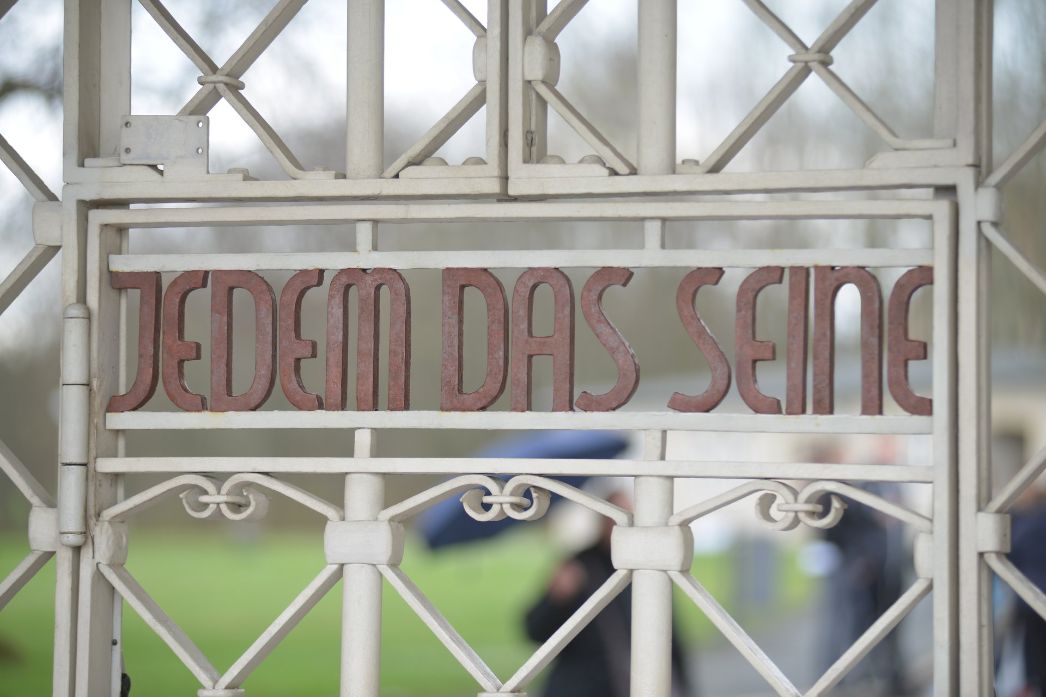
The camp gate was designed to visually emphasize the line drawn by the SS between the Nazi "master race" and its "inferiors."
The essence of the Nazi’s utter disregard for equality before the law and human dignity was pointedly expressed by the wording on the gate at Buchenwald: "Jedem das Seine" (To Each his Own). Although originally describing a concept of justice in the Roman legal tradition, the motto was now inverted to mean the brutal isolation of those deemed supposedly "alien to the community" by reason of political, social, biological, and racial discrimination. The SS tauntingly forced the inmates experience the effects of this worldview every day anew.
Not only was the phrase placed on the gate so that it was legible from the direction of the roll call square, but it was also painted in a highly visible red. The SS had the red paint renewed on the inmates' side every year until liberation.
The design of the lettering, carried out by Franz Ehrlich, an inmate commissioned with the job by the camp commander Karl Koch and a Bauhaus graduate, has its own meaning. By forming the letters after typography designed by his Bauhaus teachers Herbert Bayer and Joost Schmidt, he secretly inserted the "degenerate art" and modernity of the outlawed Bauhaus into the demeaning motto. In his own way, he thus tried to defend its original meaning:
Iuris praecepta sund haec: honeste vivere, alterum non laedere, suum cuique tribuere.
The precepts of law are these: to live honestly, to injure no one, [and] to give to each his own.
The exact story behind the design of the lettering was told in a 2009 exhibition titled "Franz Ehrlich. Ein Bauhäusler in Widerstand und Konzentrationslager":
"In January 1938 the inmates begin the ironwork for the Buchenwald gate. The production of the gateway is delayed, because the SS wish to have words incorporated onto the gate that drive home the point of being excluded from the 'racially pure German folk community.'
Only once the SS construction manager Riedle receives the motto from Berlin is the gate door completed. 'Suum cuique' is not a phrase that the camp commander Karl Koch is familiar with, but he understands the vicious meaning of 'Jedem das Seine' (To Each his Own). Set into the gate so that it is legible from inside the camp, the motto is intended to justify the isolation and murder of the inmates by the SS.
Riedl orders Franz Ehrlich and draftsman Ernst Karthoff to design the letters. Fritz Weißgerber, foreman in the metalworking shop, later reported that he did not receive a technical drawing for the gate but a design with no indicated dimensions, that is an artistic design, from the construction office. Although he does agree with the content or form – he had already begun to make sunflowers – he must produce the design. An experienced metalworker, political prisoner Alfred Seidel produces the letters."

